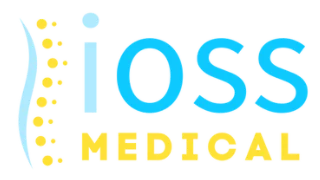Managing spondylolisthesis effectively requires specialized care to alleviate pain and improve your quality of life. At the Institute of Orthopedics, Spine, & Sports in Clifton, NJ, we focus on advanced, non-surgical treatments, with a strong emphasis on targeted injection therapies. These treatments aim to relieve discomfort, reduce inflammation, and promote healing in the affected spinal area.
Take the first step towards better spinal health and pain relief by scheduling a consultation with us. Call us at (973)-922-9515. Our dedicated team is here to provide expert care and support, ensuring you achieve the best results and improved well-being.
What is Spondylolisthesis?
Spondylolisthesis is a spinal condition where one vertebra slips forward over the vertebra below it, causing misalignment in the spine. This displacement can lead to pressure on surrounding nerves and other structures, resulting in pain and discomfort. Spondylolisthesis can occur in any part of the spine but is most commonly found in the lower back (lumbar spine). The condition can vary in severity, from mild cases that cause minimal symptoms to severe cases that significantly impact daily activities.
What Causes Spondylolisthesis?
Several factors can contribute to the development of spondylolisthesis:
- Degenerative Changes: As people age, the spinal discs and joints can undergo wear and tear. This degeneration can weaken the vertebrae and cause one to slip out of alignment. Degenerative spondylolisthesis is often associated with aging and can be exacerbated by osteoarthritis.
- Congenital Factors: Some individuals are born with a defect in the spinal structure, such as a defect in the bony arch of the vertebra (spondylolysis), which can lead to spondylolisthesis. This is often identified in childhood or adolescence.
- Trauma or Injury: A sudden injury or trauma to the spine, such as a car accident or sports-related injury, can cause a vertebra to shift forward. Fractures or stress fractures in the vertebrae, particularly in young athletes, can also result in spondylolisthesis.
- Tumors: In rare cases, tumors in the spine can weaken the vertebrae and lead to spondylolisthesis. Tumors can cause structural changes in the spine that result in the displacement of a vertebra.

What Are the Symptoms of Spondylolisthesis?
The symptoms of spondylolisthesis can vary based on the severity of the condition and the extent of nerve compression. Common symptoms include:
- Lower Back Pain: Pain in the lower back is one of the most common symptoms. The pain can be sharp or dull and may worsen with activity or prolonged sitting.
- Leg Pain: The misalignment of the vertebrae can place pressure on the nerves that travel down the legs, leading to pain, tingling, or numbness in the buttocks, thighs, or legs.
- Stiffness: The affected area of the spine may feel stiff, and movement can be restricted. This stiffness can make it difficult to perform daily activities or engage in physical exercise.
- Weakness: Muscle weakness in the legs or lower back may occur, making it challenging to walk or maintain balance. This can be due to nerve compression or muscle fatigue from altered spinal alignment.
- Postural Changes: In some cases, spondylolisthesis can cause noticeable changes in posture, such as a forward-leaning stance or an abnormal curvature of the spine.
How is Spondylolisthesis Diagnosed?
Diagnosing spondylolisthesis involves a thorough approach combining medical history, physical examination, and imaging tests. Initially, your healthcare provider will gather information about your symptoms, including their duration and any potential causes, such as recent injuries or specific activities that might have contributed to your condition. This information helps to understand the context of your symptoms and their impact on your daily life.
During the physical examination, your provider will evaluate your spine’s alignment, range of motion, and areas of tenderness. They will also look for signs of nerve involvement, such as weakness or sensory changes in the legs, which can indicate nerve compression due to the vertebra slipping.
Imaging tests play a crucial role in confirming the diagnosis and assessing the extent of the condition. X-rays are often used to visualize the alignment of the vertebrae and determine the degree of slippage. They can also reveal any associated degenerative changes or fractures. For more detailed images of the soft tissues, including spinal discs and nerves, Magnetic Resonance Imaging (MRI) is utilized. An MRI helps in evaluating the extent of nerve compression and other soft tissue abnormalities.
In some cases, a Computed Tomography (CT) scan may be employed to provide a detailed view of the bony structures of the spine, which is particularly useful for identifying fractures or other structural issues contributing to spondylolisthesis.

What Injection Therapies Are Used for Spondylolisthesis Treatment?
At the Institute of Orthopedics, Spine, & Sports in Clifton, NJ, we utilize a range of injection therapies to effectively manage spondylolisthesis. These treatments are designed to target specific areas of discomfort, aiming to reduce pain, decrease inflammation, and enhance overall function.
One of the primary therapies we offer is epidural steroid injection. These injections deliver anti-inflammatory medication directly into the epidural space surrounding the spinal nerves. This approach helps to alleviate pain and diminish inflammation caused by nerve compression. The relief provided by epidural steroid injections can be temporary but significant, allowing patients to participate in additional rehabilitation efforts.
Another effective treatment is facet joint injection. The facet joints, which are small joints situated between the vertebrae, can become inflamed or irritated in cases of spondylolisthesis. Facet joint injections involve administering a combination of a local anesthetic and a steroid medication directly into the affected facet joint. This treatment aims to reduce both pain and inflammation in the specific joint.
For individuals experiencing lower back pain that may be associated with spondylolisthesis, sacroiliac (SI) joint injections can be beneficial. The SI joints, located at the base of the spine, can sometimes contribute to discomfort in this area. SI joint injections are designed to reduce pain and inflammation in the sacroiliac joints, providing relief and improving functional outcomes.
Additionally, we offer selective nerve root blocks, which focus on specific nerve roots affected by vertebral slippage. By delivering medication directly around the targeted nerve root, these blocks help alleviate pain and improve symptoms related to nerve compression. This targeted approach can provide significant pain relief and support overall symptom management.
How Can Injection Therapies Help Manage Spondylolisthesis?
Injection therapies are a non-surgical approach that can effectively manage symptoms associated with spondylolisthesis. They work by reducing inflammation, alleviating pain, and improving function, which can enhance your quality of life. By targeting the affected areas directly, these injections can provide significant relief and help you engage in rehabilitation and other conservative treatments.
Contact Us
To make an appointment, you can call us at (973) 922-9515. Also, you can book an appointment online. If you have any queries, you can also email us at iossmedical@gmail.com.
Frequently Asked Questions
What is the Best Treatment for Lumbar Spondylolisthesis?
The best treatment for lumbar spondylolisthesis depends on the severity of the condition and the individual’s symptoms. For non-surgical management, options include:
- Medication: Pain relievers and anti-inflammatory drugs can help manage pain and reduce inflammation.
- Injection Therapies: Epidural steroid injections, facet joint injections, and selective nerve root blocks can provide targeted pain relief and reduce inflammation.
- Physical Therapy: Although not mentioned here, physical therapy often plays a significant role in strengthening the muscles around the spine and improving flexibility, contributing to symptom relief and better spinal support.
Can Spondylolisthesis Lead to Paralysis?
While spondylolisthesis can cause significant pain and discomfort, it does not typically lead to paralysis. However, in severe cases where there is significant nerve compression, there is a risk of neurological symptoms such as weakness, numbness, or difficulty with coordination. Prompt treatment is crucial to address symptoms and prevent potential complications. If you experience any signs of nerve impairment, such as severe weakness or loss of function, it is essential to seek medical attention immediately.
What is the Recovery Time for Spondylolisthesis?
Recovery time for spondylolisthesis varies based on the severity of the condition, the chosen treatment method, and the individual’s overall health. For non-surgical treatments, including medication and injection therapies, patients may experience improvement within a few weeks to several months. Recovery time is also influenced by adherence to recommended lifestyle modifications and treatment plans.
In cases where surgery is required, recovery can take longer, often several months, and involves a structured rehabilitation process to ensure optimal recovery. It’s important to follow your healthcare provider’s guidance for the best outcomes and a safe return to normal activities.

